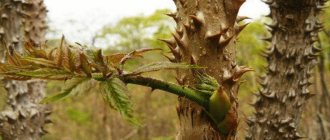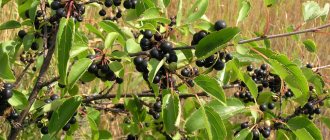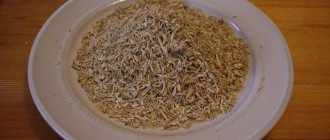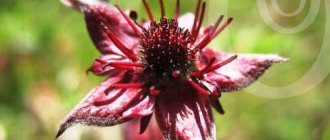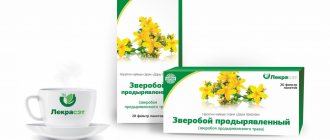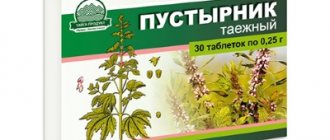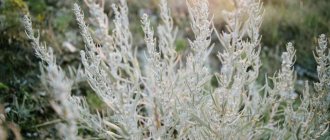Table of contents
- What are the benefits of horse chestnut?
- For what diseases is horse chestnut used?
- Horse chestnut recipes
The horse chestnut already shows off with its leaves on long petioles. The large leaves of this tree attract attention with their unusual appearance: they are palmate and actually somewhat resemble open palms. This tree can reach a height of even 30 meters.
In May, chestnuts bloom with magnificent “candles” consisting of bell-shaped white and pink flowers. Each cone-shaped candle is up to 30 cm in height, and in turn consists of 20–50 flowers.
Horse chestnut fruits are green in color and have many thorns. These boxes contain a nut, which is popularly called a chestnut. The nut seed is shiny, brown, 2–4 cm in diameter. The fruits ripen in late August-September.
Horse chestnut is a forage plant - according to legend, horse chestnuts were brought to Central Europe by the Turks as feed for horses. The pulp of this nut is white and tender.
The homeland of horse chestnut is the southern part of the Balkan Peninsula: Albania, Greece, Macedonia, Serbia, Bulgaria. There this tree grows in the forests.
In Russia, horse chestnut is widely cultivated in the European part of the country for decorating parks and landscaping urban areas.
Flowers, fruits, leaves, bark, nut shells and even the roots of horse chestnut have healing properties.
Flowers and leaves are collected in May. Seeds (nuts) are harvested from the beginning of September. The bark is harvested from the beginning of October.
Contraindications
For medicinal purposes, doctors and pharmacists, folk herbalists use the bark and flowers, leaves and, of course, chestnut fruits - the inflorescences are collected in May, the fruits in September-October, dried and then used in many ointments and tinctures.
Each part of the chestnut is rich in tannins and glycosides, fatty oils and vitamins, pectin substances - all of them, when used correctly, help to successfully cure many diseases.
What benefits can horse chestnut and its parts bring?
First of all, experts talk about the following beneficial properties of chestnut:
- This is a powerful natural pain reliever and has a pronounced disinfecting effect, suppressing growth and development, the influence of pathogenic microflora.
- Acts as a natural antiseptic and helps relieve inflammation.
- When taken orally, it has a mild diuretic effect and thereby helps relieve pathological swelling.
- They have a rejuvenating effect on the body.
- Chestnut is the first remedy for strengthening the walls of blood vessels, and therefore products with it are often used for varicose veins.
Many tinctures and teas, compresses with the addition of chestnut fruits and flowers are considered by many herbalists and traditional healers to be practically safe to use. But in some cases, experts say that it is necessary to take into account existing restrictions and contraindications.
Such contraindications are diseases and conditions:
- The period of gestation and lactation.
- Kidney failure and kidney problems.
- Intestinal dysfunction.
- Diagnosed tuberculosis and severe forms of anemia.
- Low blood pressure.
Stories from our readers! I want to tell my story about how I cured osteochondrosis and hernia. Finally, I was able to overcome this unbearable pain in my lower back. I lead an active lifestyle, live and enjoy every moment! A few months ago I got a cramp at the dacha; a sharp pain in my lower back didn’t allow me to move, I couldn’t even walk. The doctor at the hospital diagnosed osteochondrosis of the lumbar spine, herniated discs L3-L4. He prescribed some medications, but they did not help, the pain was unbearable. They called an ambulance, they put a blockade and hinted at an operation, I kept thinking about this, that I would turn out to be a burden for the family... Everything changed when my daughter gave me an article to read on the Internet. You can’t imagine how grateful I am to her for this. This article literally pulled me out of my wheelchair. In recent months I have started to move more; in the spring and summer I go to the dacha every day. Who wants to live a long and energetic life without osteochondrosis,
In folk and traditional medicine, chestnut has found its wide application - it is actively used in the treatment of the following diseases:
- malaria and dysbacteriosis;
- tuberculosis and bronchitis;
- diarrhea and protrusion of hemorrhoids;
- for leukemia and gallbladder diseases;
- for sexual dysfunction and prostatitis;
- ulcers, gastritis and increased acidity of the gastrointestinal tract;
- with heavy and prolonged uterine bleeding and diseases of the vascular system;
- arthritis and arthrosis, radiculitis;
- with anemia and whooping cough;
- heart pathology and inflammation of the muscle corset.
This composition gives chestnut tincture remarkable medicinal properties. The tincture of flowers has anti-inflammatory and analgesic effects, the peel of the fruit reduces inflammation and pain, the seed eliminates the inflammatory process.
In folk medicine, the extract is used for:
- hemorrhoids;
- inflammation of the veins;
- arthritis;
- rheumatic, gouty pain.
Alcohol tincture of chestnut for varicose veins has been used internally and topically for a long time.
When preparing the product, remember that chestnut extract has potent properties. Therefore, it is very important to observe the proportions when preparing the drug and a clear dosage when using it.
There are a large number of different recipes. Herbalists give advice on how to prepare chestnut flower tincture with vodka and how to use it.
Recipe No. 1
Necessary:
- chestnut flowers - 20.0;
- vodka - 500.0.
Add vodka to the raw material. The drug will be ready in 2 weeks. The resulting product must be filtered. Directions for use: 25 drops before meals. Duration of therapy is 20 days. The drug can be used to rub joints.
Chestnut fruits (castanea) are rich in beneficial elements. The composition includes zinc, iodine, silver, boron, various flavonoids (quercetin, rutin, etc.), vitamins B and C, potassium, iron and other substances. Unripe fruits additionally contain malic, lactic and citric acid. Together, they reduce inflammation, helping with joint diseases and varicose veins. The fruits are also used for hemorrhoids, trophic ulcers, anemia and problems with the respiratory tract. They are included in the means to combat:
- swelling;
- tuberculosis;
- thrombophlebitis;
- dysfunction of the liver, spleen or gall bladder;
- atherosclerosis;
- prostatitis;
- high blood pressure;
- strong blood clotting, etc.
The components of flowers also contribute to the improvement of blood vessels. The leaves are rich in vitamin K, tannins, pectins and glycosides. Their components help fight internal bleeding. The bark contains substances that help fight fever. In the past, it was often used instead of cinchona husk to treat amoebic dysentery, malaria and other similar conditions.
Thus, horse chestnut tincture does not involve processing of the main ingredient - chestnut, therefore all its beneficial components do not disappear during the preparation process.
In folk medicine, chestnut tincture has earned its frequent use due to its healing properties and ease of use. It is used when the water-salt balance in the body is disturbed, as a means of helping to remove toxins and radionuclides. This property is given to the medicine by the macro and microelements contained in chestnut - copper, cobalt, calcium, potassium.
Due to the fact that horse chestnut contains iodine, a vodka tincture of its fruit helps reduce the possibility of developing hypothyroidism—dysfunction of the thyroid gland.
The active substances saponosides included in the chestnut composition give it a vasoconstrictor and anti-inflammatory effect, so horse chestnut tincture - when taken internally, helps strengthen the walls of blood vessels and capillaries, reduce blood viscosity, increase the tone of venous vessels, lower blood pressure, and prevent the formation of blood clots. Infusions also help relieve swelling and promote the resorption of existing blood clots.
Chestnut tincture has proven its effectiveness in the treatment of various diseases:
- Gynecological - chestnut tincture is used for cervical erosion, uterine fibroids, mastopathy, as well as some other diseases.
- Gastrointestinal – chestnut tincture with vodka is also used for gastritis, cholecystitis, and intestinal diseases.
- Vascular - use chestnut tincture for venostasis, varicose veins, sclerotic changes in blood vessels, thrombophlebitis. Systematic use of the drug reduces blood viscosity and also minimizes the risk of thrombosis. Chestnut tincture with alcohol is an excellent remedy for the treatment of varicose veins.
- Joints - chestnut tincture with vodka is used for arthritis, arthrosis, rheumatism, as this remedy has anti-allergic and anti-inflammatory effects, restores the acid-base balance in the body.
- Cardiovascular - chestnut tincture is an almost universal remedy that is also used in folk medicine for the treatment of angina pectoris and for the prevention of myocardial infarction.
Chestnut tincture with vodka has its contraindications, and therefore you should definitely consult your doctor before taking it. Those who have liver and kidney diseases, atonic constipation, or acute gastritis should not take the product.
Horse chestnut (also called acorn or aesculus) is a deciduous tree that decorates park areas in various parts of the world. The name most likely came from the dark-colored shiny fruits of the plant, similar to the color of the shiny coat of bay horses.
It is necessary to distinguish between horse and real chestnuts. Their fruits have significant external similarities. Unlike the very bitter horse chestnut, real chestnut is edible and has a pleasant taste, reminiscent of boiled potatoes in their skins.
The plant loves moderate climatic conditions and moisture; it prefers loamy soil. Therefore, it spreads to Southern European, Indian, East Asian, and North American lands.
The plant blooms with beautiful inflorescences with a pleasant aroma, being a honey plant. Chestnuts look very attractive, not only during flowering, but throughout the entire growing season. Therefore, they are used in parks and for street landscaping.
Chestnut fruits are quite nutritious and, despite the tart-bitter taste, are used for fattening livestock. The healing properties of the chestnut tree have long been known. Inflorescences, fruits, tree bark, and leaf blades are used for medicinal purposes.
The wood has little commercial value due to its softness. But it is still used for the manufacture of furniture, household utensils, wooden containers, and various crafts, since it is easy to process, carve, and holds fastenings securely.
- a lot of tannins;
- glycosides;
- saponins;
- coumarins;
— flavonoids and other compounds
- Starch (up to 60%).
- Cellulose.
- Sugars – glucose, sucrose, dextrins.
- Organic acids – citric, lactic, malic.
- Proteins (there are significantly fewer of them here than in other nut-bearing plants).
- Fats (their content is also relatively low).
- Tannins.
- Biologically active compounds – astralgin, lutein, quercetin, etc.
- Flavonoids.
- Glycosides.
- Vitamins C, B, K.
- Calcium, iron and some other minerals.
Uses of chestnut
Chemical composition
It is not for nothing that horse chestnut is famous for its beneficial properties. After all, it contains a large number of valuable components that are necessary for the human body and help maintain good health.
The plant contains tannins, magnesium, iron, zinc, esculin, escin, isoquercetin, fatty oils, starch, coumarins, amino acids, pectin, glycosides, vitamins C, B1
Chestnut as a medicinal plant
Horse chestnut (also called horse chestnut) is a deciduous tree, with an expanded crown, with large and complex, oppositely placed leaves, planted on long cuttings, 5 or 7 palmate. On average, a mature tree can reach 25 meters in height.
Chestnut blooms in May - the flowers are bell-shaped and bisexual, the color ranges from white to pale pink, with velvet edges.
In the period from September to October, the fruits ripen - these are tricuspid boxes, covered with thorns and round in shape, similar to nuts, each of which contains seeds. The seeds are flattened and shiny fruits, dark brown and gray in color.
The plant grows in broad-leaved forests, although it serves as a beautiful ornamental tree for landscaping park areas.
origin of name
Horse or horse chestnut has been known since ancient times. Currently, a large number of explanations for the name of this plant are known. Most often it is referred to as the petioles of fallen leaves. A falling leaf leaves a scar on the branches that resembles a horse's shoe in appearance. In the second case, it is generally accepted that after over-ripening they acquire the very characteristic color of a bay horse. According to a third opinion, the name is associated with dark brown fruits with a light spot reminiscent of a horse's hoof mark.
Many domestic experts also believe that the name was given to the plant solely in order to be able to distinguish inedible fruits from the harvest of edible plants.
Pharmaceutical medicines for joints with chestnut
Tincture of horse chestnut fruit is also used in the treatment of diseases not associated with the formation of blood clots. For example, a decoction of the bark is widely used in the treatment of colitis, prolonged bleeding, inflammation of the bronchi, gastritis, etc. An alcoholic infusion of flowers is used to treat liver diseases, rheumatism, tuberculosis and shortness of breath.
Horse chestnut infusion is of great benefit in the treatment of atherosclerosis. At the same time, the general well-being of the sick person improves significantly.
The tincture prepared at home is especially often used to treat diseases of the gastrointestinal tract and gall bladder. But in this case, not fruits are used, but flowers and dried tree bark.
To combat joint diseases, doctors recommend, in addition to taking non-steroidal anti-inflammatory drugs, to use a combination of herbal remedies, including chestnut tincture for joints, the recipe for which has been helping for decades, even for patients with a very advanced form of the disease:
- You need to take 10 pcs. horse chestnut fruits, pour 300 ml of pure vodka over them.
- The mixture is infused for 10 days in a dark place.
- On sore spots, preferably apply compresses from the infusion at night, always wrapping them in a warm scarf.
Chestnut tincture for joints can also be prepared using alcohol. But since this component is aggressive and can cause burns or irritation, compresses are made from it for no more than 2 hours or diluted with water in a 1:1 ratio.
This recipe also helps as a rub during attacks of radiculitis and rheumatism.
To prepare a tincture of chestnut flowers and fruits for cardiovascular diseases, you need to chop 10 chestnuts and 2 tbsp. l. their flowers. Pour the ingredients into 500 ml of vodka and leave for 3 weeks. For a month, drink 40 drops of tincture 4 times a day.
Chestnut tincture for varicose veins is taken orally. It is prepared as follows:
- Chestnut flowers - 50 g are poured into a glass container, preferably made of dark glass.
- Pour 500 ml of vodka into a vessel. Leave in a warm room for 2 weeks.
- The course of treatment is 1 month. You need to take the tincture orally, 30 drops 3 times a day before meals, 30 minutes, with water.
This recipe helps with various etiologies of swelling, hemorrhoidal cones, uterine and nasal bleeding, vascular spasms, and mastopathy.
To treat all of the above diseases, you can use any chestnut tincture. This can be chestnut tincture prepared at home, or a drug purchased at a pharmacy.
Homemade chestnut tincture with vodka will only be useful if high-quality raw materials were used for its preparation.
Pharmacy tincture of horse chestnut, according to the instructions, is prescribed for:
- hypertension;
- for the treatment of thrombophlebitis;
- with high blood clotting;
- for the prevention of myocardial infarction.
This remedy is used for a month three times a day, 20–40 drops per dose. Store this tincture in a dark, cool place.
Chestnut tincture with alcohol is regularly used to get rid of all sorts of ailments, both by traditional healers and adherents of traditional medicine. It is used for the following ailments:
- For joints - to prepare chestnut tincture for joints, you need to pour 10 fruits with 1 glass of vodka, then leave in a dark place for 10 days. The finished drug is applied to sore spots for 1–2 hours in the form of compresses.
- For warts – chestnut leaves (1 bucket) are poured with vodka, left for 12 hours, then filtered and added to the bath when bathing. Such treatment is carried out once every 2 weeks, the bath time is no more than 10–15 minutes.
- Heart diseases - fruits (50 g), flowers (50 g) are crushed in a meat grinder, and then poured with vodka (600 g). The mixture is infused for 2 weeks in a dark place. After filtering, the tincture is taken 30–40 drops 3–4 times a day. The course of treatment is 3–4 weeks. The resulting remedy is also used for neuralgia, adding it to the bath when bathing. It helps reduce pain and strengthens the nervous system.
- For rheumatism - 1 glass of crushed fruits is poured with 1 glass of burdock juice and 1 glass of vodka. This mixture is infused for 10 days, after which it is used externally for rubbing.
- For varicose veins - 50 g of crushed chestnut is poured with 500 g of alcohol, and then left for 12 days in a cool, dark place. After filtration, the liquid is poured into a dark glass vial. Take the product three times a day, 30–40 drops, after diluting them in water.
- Respiratory tract diseases - 2 chestnuts are poured with hot water (1 glass), then left in a thermos for 1 hour. The resulting drug should be taken 2 tbsp. l. 5 times a day.
It is believed that the greatest positive effect is achieved by taking the classic tincture prepared on the brown peel. To prepare it, you need to grind 50 g of raw materials, pour vodka (0.5 l) over them, and seal them, leave them in a dark place for 14 days. Periodically shake the contents of the bottle to mix the contents. Then the liquid is filtered and for treatment, take 30 drops 3 times a day before meals. After a week, the drug is taken 4 times a day, 30 drops. This therapy lasts 1.5 months.
In the arsenal of traditional medicine and modern pharmaceuticals, there are many recipes using chestnut bark and inflorescences, fruits and leaves. There are many types of medicines you can prepare at home.
Recipe No. 1. To prepare this recipe you need:
- take 600 gr. ground chestnut - the raw material is poured with a liter of vodka;
- then infuse the resulting solution for 2 weeks in a dark, cool place;
- After this period, the tincture is filtered through cheesecloth.
The finished product is taken 30-40 drops, dissolved in a glass of water after a meal, although it can also be used for external rubbing and compresses.
Recipe No. 2. To prepare the following vodka tincture:
- take 2 tbsp. inflorescences with a slide and infuse them for 10 days in half a liter of vodka;
- filter the infusion through cheesecloth or a fine strainer;
- drink 30 drops 2-3 times a day, always after meals.
Alcohol tincture
Chestnut peel tincture also has excellent positive therapeutic results in the fight against joint diseases.
Recipe No. 1. Alcohol tincture can be made as follows:
- it is enough to take 45-50 chestnut skins and split them;
- then pour in half a liter of alcohol and leave for 2 weeks;
- After straining, take 30 drops. half an hour before meals.
This tincture is also used for external rubbing.
Recipe No. 2. Another cooking method:
- Ripe chestnuts are ground in a meat grinder and filled with alcohol in a glass container - 1 liter. alcohol base take 300 g. fruits;
- leave in the refrigerator for a week;
- After straining, drink 25 drops. 2 times a day after meals.
This tincture is especially effective for salt deposition in joints.
The simplest recipe for preparing a simple and effective remedy is an infusion or decoction in boiling water:
- For this, take chestnut leaves and inflorescences - 50 grams is enough. dry raw materials, pour them into glasses of boiling water;
- Having covered, let it brew for half an hour;
- They drink half a glass of this tea in the morning and evening.
A more concentrated decoction can be obtained by preparing the following recipe:
- For a glass of boiling water, also take 50 grams. dried inflorescences;
- then boil them for 30 minutes in a water bath;
- drink like tea, adding honey to taste.
Experts in traditional medicine recommend drinking a tincture or decoction of chestnut flowers every spring, while the chestnut tree is in bloom, for 2-3 weeks, since such products have a bactericidal, anti-inflammatory and rejuvenating effect on the body. In addition, in this way you can support weakened immunity.
Ointment for joints
For external use, ointments made using chestnut fruits and inflorescences have a positive therapeutic effect.
To prepare it take:
- 5 chestnut fruits, ground in a meat grinder or dried 5 tbsp. with a hill of inflorescences;
- fill them with half a liter of vegetable, preferably unrefined, oil;
- then boil in a water bath for an hour, allow to cool and filter.
You can also prepare an ointment based on lard:
- Add 100 grams to half a kilo of melted pork fat. ground dried chestnuts;
- then boil the mixture in a water bath for half an hour;
- in this state they insist for a day;
- This is repeated for 3 days, then filtered while warm.
Chestnut also has a pronounced analgesic effect - in this case, you can apply healing compresses to the joints.
Compress preparation process:
- take chestnut bark and flowers - 5 tbsp each. l.;
- pour the mixture with a glass of boiling water and leave for an hour;
- then add another 300 ml of water and put it on the stove - when it boils, remove it from the heat;
- Soak a napkin in this decoction and apply it to the sore joints for half an hour.
The following recipe for lotions is alcohol-based:
- 20 gr. chestnut colors pour a liter of alcohol onto the floor;
- it is infused for 14 days;
- The fabric is soaked in this solution, applied to the sore joints, wrapped in polyethylene and heat.
A chestnut-based rub for a sore joint is a real godsend.
At the same time, preparing it is simple:
- first of all, the chestnuts are peeled and the white pulp is ground in a coffee grinder;
- then take 3 tbsp. l. – they are poured with half a liter of vodka and left for at least 3 weeks;
- after that it should be strained and used for external rubbing of the affected joint - it improves blood flow and metabolic processes, warms and relieves pain.
To prepare medicine from chestnut inflorescences:
- take 5 tbsp. l. inflorescences and infused in 250 ml of vodka or alcohol;
- then leave in the refrigerator for ten days;
- after straining, take 30-35 drops in the morning and evening 30-40 minutes before meals.
Another recipe using vegetable oil:
- take 50 gr. dry chestnut inflorescences and fill them with 300 ml. any vegetable oil;
- then the mass is boiled over low heat for half an hour;
- After removing from the stove, cool to room temperature and, after straining, pour into a glass container.
Chestnut kvass to improve health
- Chestnut fruits - 25 pieces
- Water - 2.5 l
- Sugar - 1 glass
- Whey (can be replaced with sour cream) - 1 cup
Cut the nuts into two parts and, together with a small stone (it will serve as a weight), place them in a gauze bag. Place the bag at the bottom of the jar and fill it with boiled water, previously cooled. Add sugar and whey. Cover the jar with gauze, folding it in thirds. Place in a dark and warm place for fermentation for 2 weeks.
Filter the kvass, and refill the remaining fruits with water, adding sugar. This time the drink will be ready within a day.
You can use the starter for several months, but it is advisable to add 3-4 new chestnuts 2 times a month.
Drink 2 glasses of kvass a day for a month. It cleanses the body of toxins, heavy metals and radionuclides, accelerates the regeneration of the mucous membrane of the gastrointestinal tract, and provides the body with all the necessary vitamins and minerals. In addition, the drink has a pleasant taste and quenches thirst well.
How and when to collect chestnuts?
It is recommended to collect chestnut blossoms in the month of May, during the period of active flowering of the tree - large inflorescences are selected, without visible damage or attack by insects. It is better to collect in the afternoon, when the dew has subsided and the flowers have fully opened.
The nuts are collected in September - October; if it is necessary to harvest the bark, it is collected in early spring. The buds are collected at the beginning of March and the leaves - preferably at the beginning of summer.
Chestnut nuts are harvested in the fall
Description of procurement rules
It is best to remove bark from a tree in early spring, as soon as the snow melts.
The inflorescences and leaves reach their peak usefulness during the flowering period, which is when they need to be collected.
Fruits that ripen in September should not be taken. They will contain the greatest amount of useful substances in October, before the leaves fall.
You can dry the raw materials naturally or in an electric dryer. If you air dry components, you need to protect them from harsh sunlight and moisture. Moisture is the main enemy of chestnut, because when wet, the raw material loses all its beneficial properties. A leaf of wood or another part of it must be placed in an electric dryer at a temperature no higher than +25ºС. You can store the blanks for 1 year, no more.
BPH
To prepare the tincture, you will need the following ingredients:
- dry fruits of the plant (25 g);
- alcohol (250 ml).
Chestnuts need to be peeled and ground into powder. And fill it with alcohol. Infuse the mixture for two weeks. If alcohol was replaced by vodka, then the period should be increased to a month. The product must be taken before lunch and dinner. Dosage – 10 drops per dose. The duration of the course is 20 days. If the chestnut was infused with vodka, then the number of drops should be doubled.
Contraindications
✔ Stimulate immune defense.
✔ Have a bactericidal effect.
✔ Stop inflammatory processes.
✔ Give a resolving effect, eliminating blood clots and tumor growths.
✔ Calm.
✔ Improves blood composition.
✔ Cleanse from toxins.
✔ Promote rejuvenation.
But no matter how beneficial this natural ingredient is, there are certain limitations to its use.
- Blood clotting disorders, bleeding tendency, thrombocytopenia.
- Pregnancy, natural feeding of babies.
- Individual intolerance, development of allergic manifestations.
- Hypotension.
- The presence of chronic constipation associated with atony of the intestinal walls.
- Menstrual irregularities.
- Low acidity in the stomach.
- Kidney failure.
- Liver problems in the acute phase.
- Taste aversion.
In any case, if you want to use chestnut for treatment or preventive purposes, it is better to consult a doctor. Especially in the presence of chronic diseases.
If you intend to use fresh flowers, then you need to pick half of the blooming chestnut “candle” (this is about 50 g), rinse and pour a glass of boiling water in an enamel, clay, glass container.
You will need less dry raw material - 1-1.5 large spoons without top. The liquid should be placed in a steam bath and kept there for about 20 minutes. The decoction should first be left for several hours, and then filtered, carefully squeezing out the flower residue.
Take the product in a third of a glass, dividing into several doses. It helps with damage to arteries and veins in the legs, hemorrhoids, trophic ulcers, radiation, prostatitis, and tumors.
Pour five to seven large spoons of dried flowers into a liter of boiling water and leave, wrapped, for 6-8 hours. You can leave it overnight. Afterwards, the infusion is filtered and taken in half a glass, it can be used as tea. A liter is the daily norm.
The infusion is used in the same cases as the decoction. The only difference is that there is a lower concentration of active components.
- A person has an established diagnosis of “hypotension”, since the drug can lower blood pressure.
- There are problems with blood clotting, in particular thrombocytopenia;
- At the time of use of the drug, the person has active internal bleeding, for example, hemorrhoids. In this case, the patient's condition may deteriorate sharply. The use of the drug must be agreed with the attending physician.
While taking the tincture, in some cases a person may experience both severe nausea and heartburn, so a preliminary consultation with your doctor is necessary. Additionally, regular blood monitoring for prothrombin levels is required.
Now you know how to make horse chestnut tincture. As you can already see, the process is not particularly difficult. Therefore, use the recipes we have collected and be healthy!
Content
- Application of chestnut fruit tincture
- How to make tincture from horse chestnut fruits
- Tinctures for the treatment of joints
- Tincture of chestnut fruits for rheumatism
- Tincture of ammonia for the treatment of blood vessels
- Tincture for the treatment of varicose veins
- Tincture for the treatment of heart diseases
- Tincture for the treatment of male problems
- Tincture for uterine fibroids
- Tincture for the treatment of sinusitis
- Water tincture of chestnut fruit
- Chestnut kvass to improve health
- Contraindications to the use of horse chestnut fruit tincture
Indications for use
She should not be in the sun. It's better to put it in the nightstand or pantry. The finished flower tincture must be filtered by squeezing out the flowers. Take the product 25-40 drops (about a teaspoon) after each meal - up to 4 times a day.
Tincture of chestnut flowers with vodka - effective for vascular damage, hemorrhoidal manifestations, and the presence of tumors (as an adjuvant).
It is also used externally as rubs and compresses for varicose veins, joint diseases, the appearance of tumors, muscle pain resulting from physical overload, and neuralgia.
The rub is used twice a day. After the procedure, it is recommended to insulate the treated surface.
Fresh Juice
For varicose veins of the lower extremities, atherosclerosis, the presence of blood clots, as well as hemorrhoids and trophic ulcerations, it is useful to take freshly squeezed juice from fresh flowers. To do this, the color is separated from the stalks, washed, and dried.
Next, it is ground in a meat grinder or using a blender. Using a piece of gauze, squeeze out the juice. It should be taken in approximately 25-30 drops.
Having measured out the required amount of juice, mix it with a quarter glass of water and drink it before eating. Reception is carried out twice a day. The approximate course of treatment is two weeks.
Other folk recipes using horse chestnut.
In addition to those mentioned above, chestnut seeds also exhibit diuretic, hemostatic, expectorant, and diaphoretic effects. For the preparation of medicinal products, the use of chestnuts collected along roads and in industrial areas is strictly not recommended. Carefully! An overdose causes poisoning.
Top dressing
Fertilizers must be applied regularly, especially during the first time after planting. But it is important to ensure that there is no excess of nutrients. After replanting the plant, you can add superphosphate, ash, and humus.
In the summer, use complex mineral supplements every month.
Thus, horse chestnut is a medicinal plant used for medicinal purposes, as well as in the manufacture of cosmetics. The fruits of the crop are not eaten.
Phlebitis
In this case, you will need the following ingredients:
- St. John's wort flowers (20 g);
- dried chestnut bark (20 g);
- horse chestnut fruit powder (30 g);
- dry grape wine (200 ml);
- vegetable oil (0.5 liters).
First you need to mix chestnut powder and wine. And only then add the remaining ingredients to the mixture. Everything must be thoroughly mixed and left to infuse for three days in a dark place. The contents need to be shaken periodically. After the time is up, the mixture is heated in a water bath so that the wine completely evaporates. The product is used externally in the form of a compress.
What are the consequences of varicose veins?
The disease is unpleasant, insidious. Cosmetic defects repel possible gentlemen; disruption of the circulatory system provokes thrombosis, fraught with strokes, heart attacks, and necrosis. It is impossible to stop an advanced disease; it is better to prevent a nightmare. An added bonus: bleeding nodes, constantly trying to fall out. Infection of varicose wounds can lead to gangrene requiring amputation.
It is difficult to avoid painful adventures; women have natural weakness, increased permeability of the vascular walls, and valve insufficiency. Pregnancy, childbirth, bags filled to the brim with food, nursing a child (well-fed children love to saddle a thin mother), excess weight, long periods of standing, a sedentary lifestyle, and sedentary work provoke the beginning of a thorny path. Special exercises can only briefly slow down the development of varicose veins.
Humanity found a way out a long time ago. Horse chestnuts are a gift from kind Nature, a real living pharmacy. A close examination of the plant's medicinal characteristics is striking. The healing power and the range of diseases that can be affected are enormous.
Treatment of varicose veins with horse chestnut is a good old method available to everyone. Smooth, beautiful seeds of a powerful tree have the rare property of toning the relaxed walls of veins, while thinning the blood. Horse chestnut collected in early autumn can be infused with alcohol and brewed with water to obtain an effective remedy for varicose veins on any part of the body.

